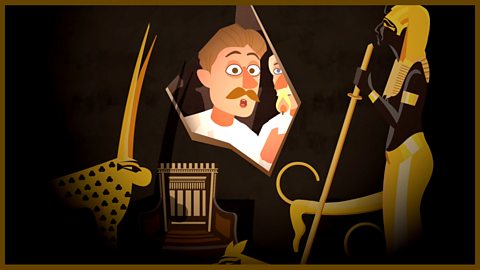Finding out about Howard Carter's extraordinary discovery of King Tutankhamun's tomb in 1922.
This is an artefact from Ancient Egypt. It's called a shabti and this little statue tells us about the beliefs and rituals of the AncientEgyptians.
Shabti were buried in tombs with important members of Egyptian society.
They were made holding little tools, so they'd look like mini servants and agricultural workers and that's because the people at the time believed that the statues would come to life in the afterworld and do all the work that was needed.
In 1922 - after searching for six years - a team led by the British archaeologist, Howard Carter, discovered the tomb of King Tutankhamun.
And inside they found more than four hundred shabti.
In total, there were over 5 000 objects in that tomb which took eight years for Carter and his team to remove and catalogue.
The tomb had four chambers, each filled with a huge range of objects including gold jewellery, chariots, model boats, a tiny thrown and paintings.
One of the most amazing items was King Tutankhamun's golden mask, which weighed a whopping ten kilograms and was found on his mummified body in the innermost coffin.
Tutankhamun became pharaoh around 1333 BC and ruled for about ten years. We know he was eighteen whenhe died, so that tells us he was only eight when he became the pharaoh.
Inside his tomb the archaeologists found child-sized thrones as well as games and puzzles all helping to tell the story ofthe child pharaoh ruling over his kingdom.
King Tutankhamun: I win! Now I want a snack.
Recent scans of the mummified remains of Tutankhamun help us to understand what he looked like when he was alive.
They show that he was born with a misshapen left foot and a twist in his spine. So he used sticks to help him walk.
Lots of those sticks were found in his tomb. We also learn about the pharaoh from tomb paintings and carvings on temple ruins.
It appears that Tutankhamun and his dad Aktenaten and did not agree on their favourite god.
So when Tutankhamun became pharaoh, he set about changing all things Aten to all things Amun starting with his own name - and moving on to demolishing his father's prized temple and even moving his body from the sacred ground of Aten to the sacred ground of Amun.
Tutankhamun was reported to have had a wicked temper.
Paintings in the tomb of General Horemheb, who later became pharaoh himself, recorded that he was the only one brave enough to talk to Tutankhamun when he was angry.
King Tutankhamun: Oh it's not fair, get out of my way I'm the king!
From mummified body, personal items and paintings inside Tutankhamun's tomb we learn a lot about his life, but we also learnabout his death.
Scans of his mummified remains show that shortly before his death he broke a bone in his left leg.
This, along with damage to his ribcage led some experts to believe he was killed in a chariot crash or perhaps even a hippopotamus attack. What a way to go!
But experts now think it was more likely to have been a fall.
Today King Tutankhamun is one of the most famous Ancient Egyptian pharaohs, mostly thanks to the determination andpersistence of Howard Carter.
Carter and his team unearthed an ancient tomb, so full of artefacts that it transports us back over 3 000 years, bringing to life another world, where the child king ruled.
King Tutankhamun
Video summary
This video gives pupils an understanding of the life and death of King Tutankhamun. It explains how we have been able to find out about life in Ancient Egypt by the things that were buried with pharaohs, like Tutankhamun.
We find out how King Tutankhamun was buried, why certain things were buried with him and what those things tell us about his life.
We learn about the discovery of his tomb in 1922 and who discovered it. We explore a key source called a shabti. These were small ornaments which were buried with pharaohs and tell us about the beliefs and rituals of the Ancient Egyptian people.
We chart the journey through King Tutankhamunβs short life, becoming pharaoh around the age of eight and dying around eighteen years old.
The video also explores the difficulties King Tutankhamun had with regard to his mobility due to a misshapen foot and curved spine and the reported difficulties he had in managing anger and emotions!
Further resources
Click to display the image full-size
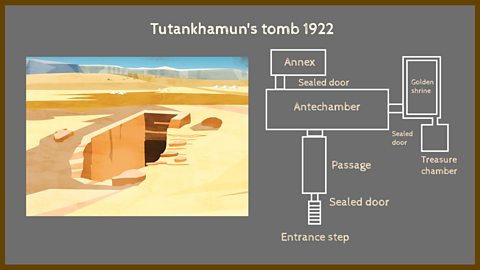
Click to display the image full-size

Click to display the image full-size
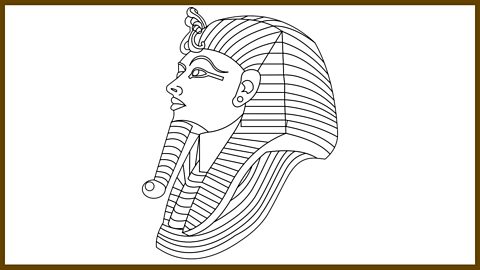
Click to display the image full-size
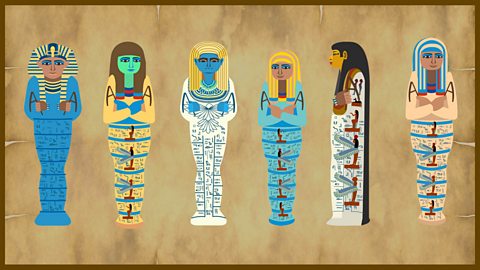
Click to display the image full-size

Click to display the image full-size
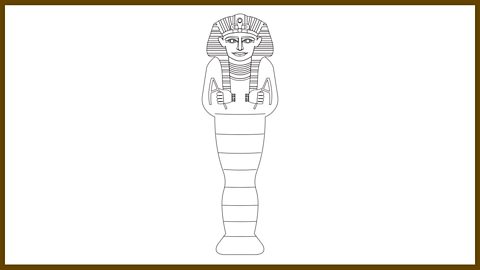
Teacher's Notes
This video gives a snapshot of Ancient Egypt and how important the process of burial was, particularly to the pharaohs. It can be used to discuss the process of burial, and how much thought went into preparations and carrying out the process itself.
It will help pupils understand how we find out about the past and the role of sources in this exploration.
We find out about King Tutankhamunβs life through the sources that were found in his tomb - the burial mask, the shabti and other items. This provides opportunities for pupils to explore the role and reliability of sources when carrying out historical enquiry.
Pupils can discuss how early explorers such as Howard Carter would have felt at the time of the discovery and also to consider how they would handle historical remains sensitively - preserving what was found while learning from the remains.
Points for discussion (History Linked)
- Who was King Tutankhamun?
- What was found in the tomb of King Tutankhamun?
- Who discovered the tomb of King Tutankhamun?
- How old was King Tutankhamun when he became pharaoh?
- How old was King Tutankhamun when he died?
- How heavy was the mask found in the tomb? Can you find something in your classroom that weighs the same?
- How do some experts think King Tutankhamun died?
*Suggested Activities (Cross Curricular opportunities)
Design and make a shabti β Using illustrations from the animation, pupils are to design and then make a shabti using papier machΓ© / clay. What style is used? What colours are used? What has it been designed to represent to the pupils? Once completed, pupils could present their shabti to their peers.
Pupil Parliament β King Tutankhamun was a young pharaoh - a very young pharaoh. Pupils could explore if they were the Prime Minister, what decisions would they make about the running of the country. What would your five pledges be to make the country a better place? Each pupil to determine which peer they would vote for based on their pledges and determine the class victor!
Creative Writing β Writing a diary entry as if the pupils were Howard Carter on the day of the discovery of the tomb of King Tutankhamun. What thoughts and feelings were going through his mind? How did he feel upon discovery? Did he have any idea of the scale of his discovery? What did the sources he discovered tell him?
Performing Arts β Building on the creative writing activity, can pupils in small groups develop a piece of drama to re-enact the discovery of the tomb? What feelings were going through the minds of members of the group? Use freeze frame techniques to help develop deeper thinking.
Material decay β Many of the items in the tomb survived for thousands of years and were preserved to be discovered by Howard Carter and his team. Does it matter what material the items discovered were made of? Using a variety of classroom / everyday products (stick of chalk, piece of crockery, metal coin, sugar cube) can the pupils predict which will remain intact for the longest time when placed in a fizzy drink?
This film is relevant for teaching History at KS2 in England, Wales and Northern Ireland and 2nd Level in Scotland.
Pyramids. video
Exploring the different types of pyramids in Ancient Egypt - their construction and their purpose.
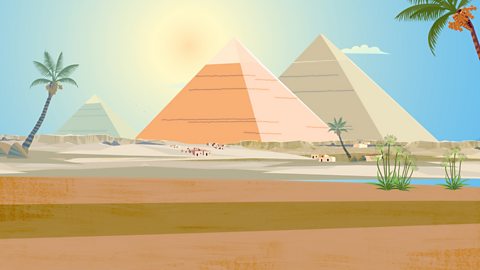
Rames - The Engineer. video
Rames is 12 years old and about to join the thousands of workers constructing the pyramids.
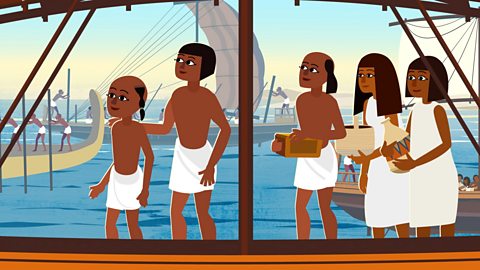
Nanu - The Farm Girl. video
Nanu is 12 years old and works at home on the farm - but she longs to train as a doctor.

See also...
KS2 Music: Ancient Egypt. collection
A collection of fun, catchy songs and activities to help you consolidate your study of Ancient Egypt.
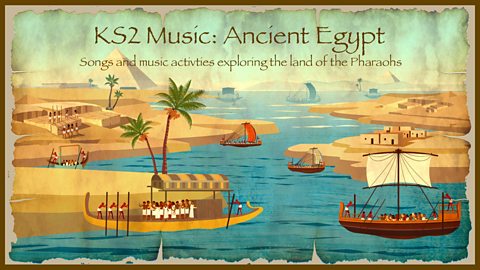
Song: 'Out of the gloom, Tutankhamun'
Join in with a song about the discovery of King Tutankhamun's tomb in 1922.
